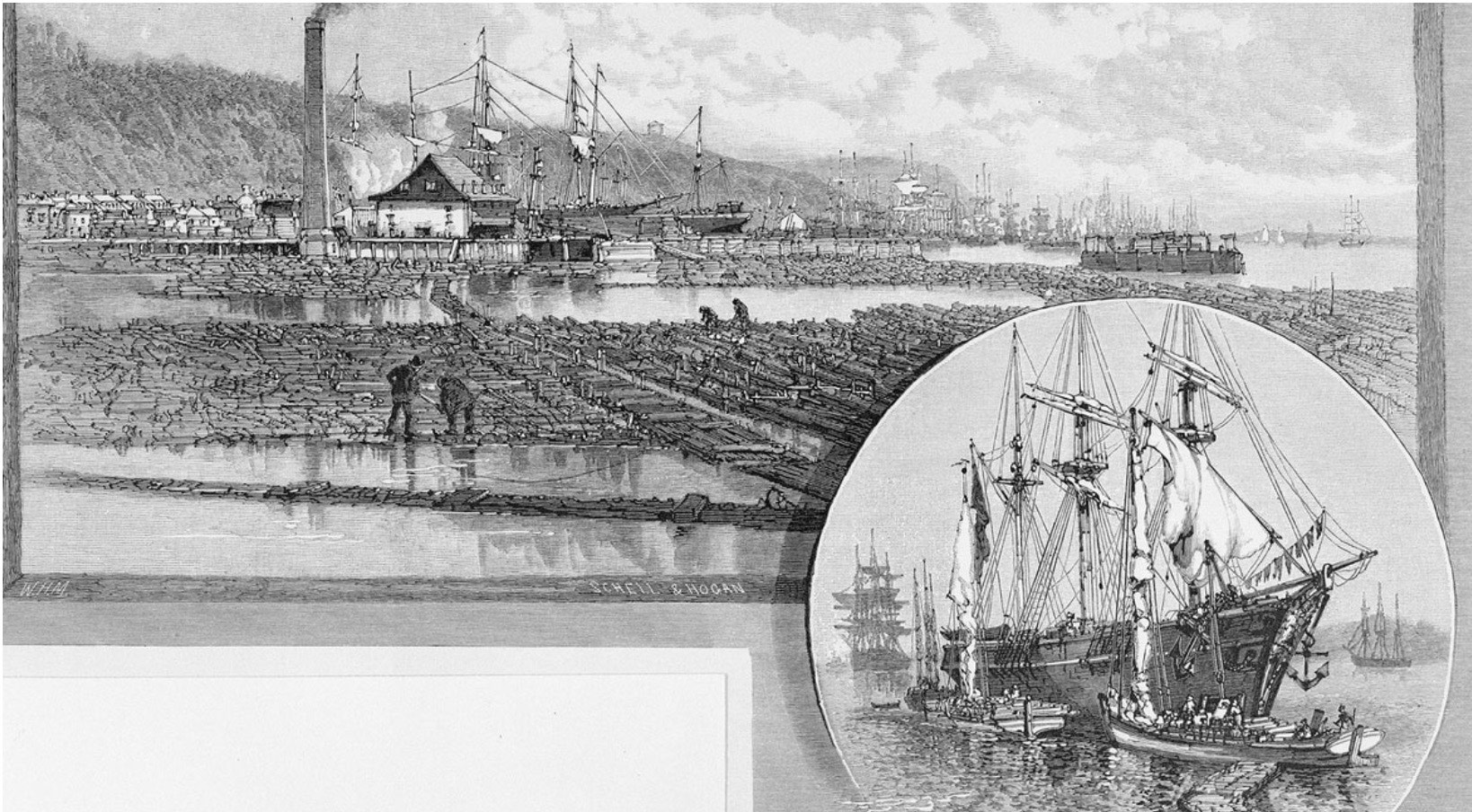John Egan, lumber baron
The origins of Hull and of Aylmer are inseparable from the beginnings of the “square” timber industry. The industry involved squaring the huge pines of our region, floated down the Ottawa River and down the Saint-Lawrence River to Quebec City, then sent to Great Britain. This major commerce owed its existence to Napoleon I, Emperor of the French, whose « Continental Blockade » had forced England to adopt harsh protective tariffs to make the export of timber produced by Canadian foresters profitable.
This major trans-Atlantic commerce would save Philemon Wright’s small colony established since 1800 in the township of Hull. He was the first in 1806 to float a huge raft of “square” timber, the “Columbo”, down to Quebec City. His success led the forest entrepreneurs of the Ottawa Valley to follow his example; it became the green gold rush. Colossal fortunes were made and devastating bankruptcies recorded. This was how John Egan, the first Mayor of the village of Aylmer, would build his fortune alongside foresters such as Joseph-Ignace Aumond, James Skeed, Henry LeMesurier and Ruggles Wright while establishing the foundations of the village Eganville on the Ontario shore of the Ottawa River. He was inspired by his friend, Ruggles Wright, whose first slide, built at the Chaudière Falls in 1829, allowed entire rafts of square timber to be floated down river from the falls that prevented rafts going down river. Egan had similar dams and slides built, among other places, on the Bonnechere River, at Chats Falls and on the Quyon River, where he had an imposing sawmill built. However, upon his death, despite the astonishing success of his business, he left only an amount of about 5,000£ to his heirs.
Montreal, July 10, 2022.
Pierre Louis Lapointe, Ph.D.
Historian






